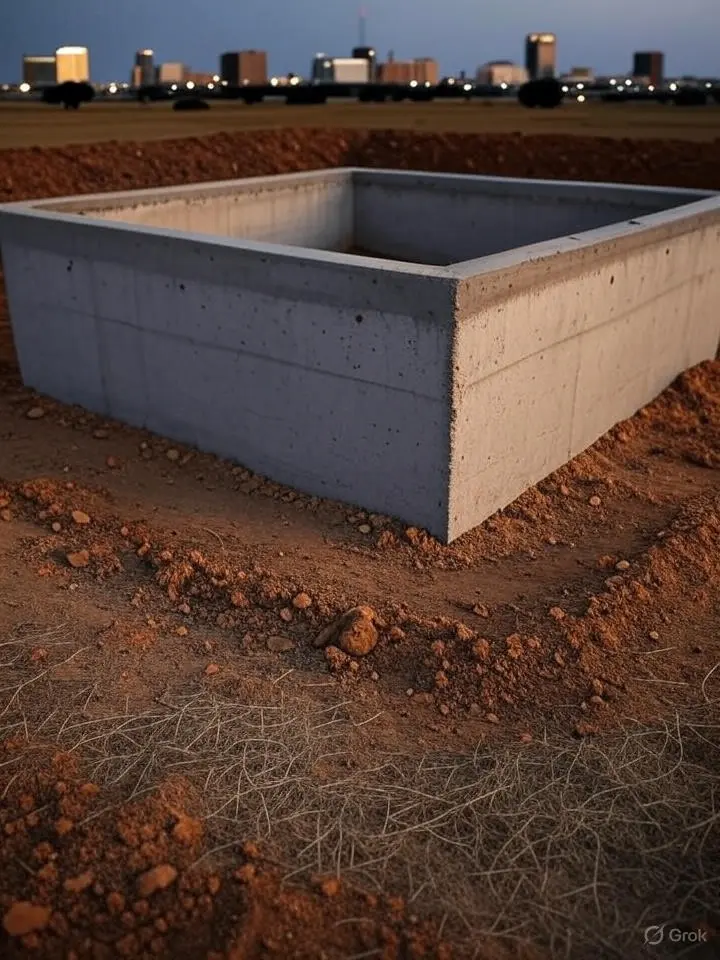How Weather Affects Concrete in West Texas: 2025 Guide
Introduction
Have you noticed cracks in your concrete driveway after a scorching West Texas summer or a rare freeze? Weather and concrete don’t always get along, especially in Lubbock, where intense heat, occasional freezes, and dry winds test every slab. As we move through 2025, understanding how these conditions impact concrete in extreme weather is more important than ever. This guide breaks down the challenges and shares practical strategies to protect your concrete, keeping it strong year-round. Explore common concrete problems for more insights, and if the damage feels overwhelming, our team is here to help—more on that soon!
Weather Challenges for Concrete in West Texas
How Lubbock’s Climate Impacts Concrete
Lubbock’s unique weather poses tough challenges for concrete, especially in 2025 with shifting climate patterns. Here’s how it affects your slabs:
Extreme Heat
In the blazing West Texas summers, temperatures often soar above 100°F, causing concrete to expand and crack. This weather and concrete interaction weakens surfaces over time, a growing concern as heatwaves intensify this year.
Freeze-Thaw Cycles
Though rare, Lubbock’s occasional freezes—common in early 2025 winters—let water seep into cracks, freeze, and expand, damaging concrete in extreme weather. This cycle can lead to costly repairs if ignored.
Dry Winds
The region’s dry winds pull moisture from curing concrete, leading to shrinkage and surface flaws. In 2025, these conditions demand extra care to keep your concrete in extreme weather looking solid.
Mitigation Strategies
Protecting Concrete in Extreme Weather
You can fight back against Lubbock’s tough climate with these practical steps to protect your concrete in 2025:
- Use Heat-Resistant Sealants: Apply a high-quality sealant to shield concrete from extreme heat, preventing cracks during West Texas summers. This simple weather and concrete fix extends your slab’s life.
- Apply Proper Curing Techniques: Keep concrete moist during the first week after pouring to resist freeze-thaw damage. In 2025, this is key for surviving Lubbock’s rare cold snaps—learn how to maintain your concrete driveway for more.
- Install Drainage Systems: Add slopes or channels to manage water runoff, reducing the impact of dry winds and preventing shrinkage. This strategy keeps concrete in extreme weather strong year-round.
FAQ Section
Frequently Asked Questions About Weather and Concrete
Q: Why does heat damage concrete?
A: High temperatures cause concrete to expand and crack, a common issue with weather and concrete in West Texas summers.
Q: Can I prevent freeze damage in 2025?
A: Yes, proper curing helps—check how to maintain your concrete driveway for Lubbock-specific tips this year.
Q: How do dry winds affect my concrete?
A: They cause shrinkage, weakening surfaces—learn about common concrete problems to spot early signs.
Q: What if my concrete is already damaged?
A: For severe issues, reach out to concrete repair experts to restore it in 2025.
Conclusion and CTA
West Texas weather can take a toll on your concrete, from scorching heat to rare freezes and dry winds, but understanding these impacts is your first step to protection in 2025. With the right strategies, your concrete in extreme weather can stay durable and beautiful all year. Don’t let the elements win—protect your concrete from the elements—contact us with concrete repair and let our experts safeguard your investment today!







